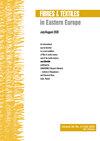利用木质素和生物质从水溶液中去除重金属
IF 0.9
4区 工程技术
Q3 MATERIALS SCIENCE, TEXTILES
引用次数: 1
摘要
摘要工业发展导致的污染物生产过剩导致包括重金属在内的大量有毒致癌物质在水生生态系统和其他生态系统中沉积。这是当今时代的文明问题,对包括人类在内的自然环境构成严重威胁。因此,最近开发有效的方法来最大限度地降低水生系统中重金属离子的浓度,从而减少其对环境的负面影响变得极其重要。一种这样的技术是吸附,它被认为是从水溶液中去除重金属离子等污染物的有效方法。查阅过去几年的现有文献,可以得出结论,天然来源的吸附剂正变得越来越重要。这些是农业废弃物,各种生物质,以及来自各个行业的废弃物。本研究试图介绍和评估天然来源材料的吸附能力,包括燕麦麸、壳聚糖、藻酸盐、树皮、椰子纤维和木质素。与合成吸附剂相比,这种生物吸附剂的使用对环境更友好,完全符合可持续发展和循环经济的概念。本文章由计算机程序翻译,如有差异,请以英文原文为准。
Removal of Heavy Metals from Aqueous Solutions with the Use of Lignins and Biomass
Abstract The overproduction of pollutants resulting from the development of industry causes the deposition of large amounts of toxic and carcinogenic substances, including heavy metals, in the aquatic ecosystem and other ecosystems. This is a civilisation problem of the present times, posing a serious threat to the natural environment, including humans. For this reason, it has recently become extremely important to develop effective methods to minimise the concentration of heavy metal ions in the aquatic systems and thus reduce their negative impact on the environment. One such technique is adsorption, which is believed to be an effective method of removing contaminants such as heavy metal ions from aqueous solutions. Looking at the available literature of the last few years, it can be concluded that adsorbents of natural origin are becoming more and more important. These are agricultural waste, all kinds of biomass, and waste from various industries. The study attempts to present and evaluate the sorption capacity of materials of natural origin, including oat bran, chitosan, alginate, tree bark, coconut fibre, and lignin. The use of such biosorbents is more friendly for the environment compared to their synthetic counterparts and perfectly fits the concept of sustainable development and the circular economy.
求助全文
通过发布文献求助,成功后即可免费获取论文全文。
去求助
来源期刊

Fibres & Textiles in Eastern Europe
工程技术-材料科学:纺织
CiteScore
1.60
自引率
11.10%
发文量
12
审稿时长
13.5 months
期刊介绍:
FIBRES & TEXTILES in Eastern Europe is a peer reviewed bimonthly scientific journal devoted to current problems of fibre, textile and fibrous products’ science as well as general economic problems of textile industry worldwide. The content of the journal is available online as free open access.
FIBRES & TEXTILES in Eastern Europe constitutes a forum for the exchange of information and the establishment of mutual contact for cooperation between scientific centres, as well as between science and industry.
 求助内容:
求助内容: 应助结果提醒方式:
应助结果提醒方式:


